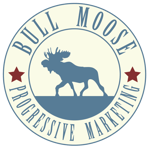Whenever I see a headline proclaiming the ROI of inbound marketing I am more often than not disappointed to discover that associated content is nothing more than a water downed breakdown of valid, but otherwise meaningless statistics related to factors contributing to ROI. Sure these facts have their place, but for a guy with real-world P&L experience at a Fortune 500 company they don’t necessarily close the gap between conceptual and the bottom line.
One of the reasons for this, I believe, is that some marketers aren’t quite sure what to look at exactly. Cost per lead? Cost per customer acquisition? Sales cycle? HubSpot, in fact, found in their 2013 State of Inbound report that 34% of business cannot or do not calculate ROI from their marketing. To be fair, tracking the ROI of inbound marketing is a difficult proposition that requires both time and consistency, two commodities marketers often have to bargain with upper management to get. Even so, employing an inbound marketing strategy is still better than the alternate ROI of not doing inbound. What’s key is knowing where to plug in the right numbers.







